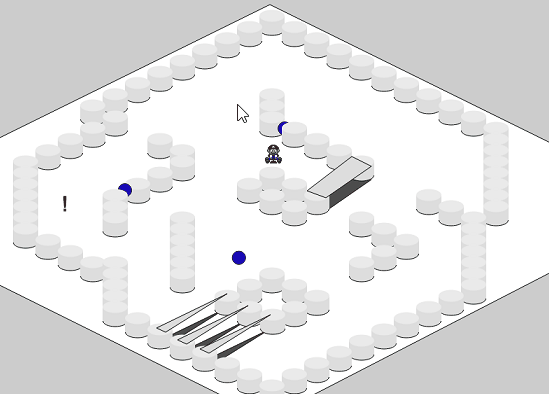
The senior programmer on my team had been developing a RPG inspired interface for teaching vocabulary and came to me about developing an isometric world map for it, based on a few isometric demos I had made in the tool in the past.
While I was definitely onboard with the idea, I started by identifying three of the biggest problems I had with my demos. Performance, our runtime had a memory leak issue that could not be addressed by our team. Ease of programming, the existing paradigms didn't provide a practical way to program behavior for more than a few pawns. Ease of design, building objects like walls was extremely time consuming and too complicated for our designers.
In this proof of concept game you steer your cart around the track and collect exclamation points while avoiding the blue orbs that chase you. With each point collected the orbs accelerate, eventually catching you.
While this proved that isometric and more real-time games were possible in the company's tool it had a number of performance issues. It suffered from all three of the issues described. After a minute or so the garbage collector would start running every other second to address the memory leak. The orbs had to be hard coded into the game loop to be updated, and due to some issues with collisions all hitboxes for things that moved were exactly one pixel. At the design level, each object needed to be manually placed in the correct layer.









